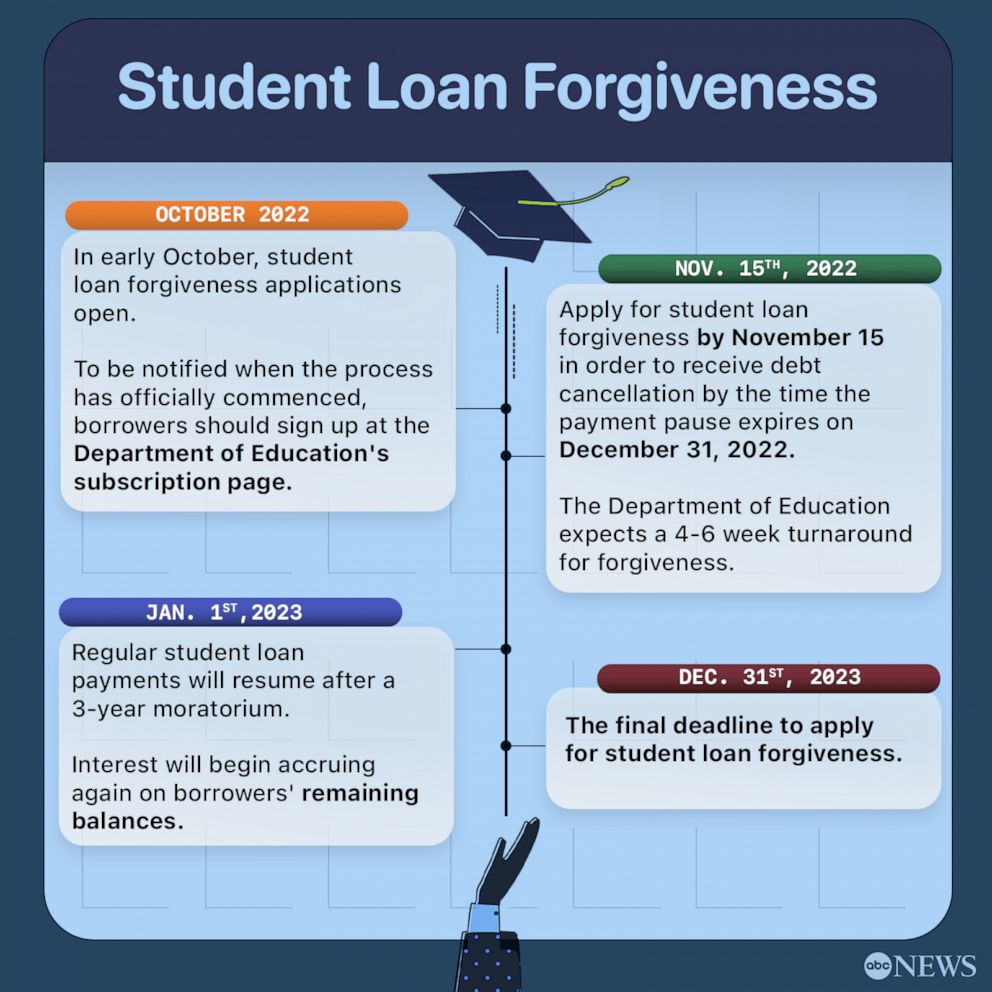The Biden administration has begun implementing the IDR Account Adjustment, a significant initiative aimed at expediting student loan forgiveness for numerous borrowers. Recent guidance from the Education Department indicates that the program’s scope may be even more extensive than initially anticipated. Here’s what borrowers need to understand:
How the IDR Account Adjustment Will Lead to Student Loan Forgiveness

Introduced last year by the Biden administration, the IDR Account Adjustment is a long-awaited solution addressing well-known issues with Income-Driven Repayment (IDR) programs. IDR encompasses various repayment plans, allowing borrowers to repay their federal student loans based on factors such as income, marital status, and family size. Payments are recalculated annually, and after 20 or 25 years (depending on the plan), any remaining balance can be completely forgiven.
Historically, IDR plans have had stringent rules. Only time spent in an IDR plan counts towards loan forgiveness, and certain actions like consolidating or failing to re-certify income when required could hinder a borrower’s progress. Investigative reports have also exposed multiple administrative issues with the programs, including loan servicers that “wrongfully steered borrowers into costly forbearances” and a system that inadequately tracked borrowers’ IDR progress.
The IDR Account Adjustment aims to rectify these past problems. This initiative will enable the Education Department to credit borrowers with time that would not typically count towards their 20- or 25-year IDR student loan forgiveness term, including most repayment periods and some non-payment periods like deferment and forbearance. Borrowers don’t even need to be currently enrolled in an IDR plan to benefit from the initiative.
Furthermore, the IDR credit can also be applied to loan forgiveness under the Public Service Loan Forgiveness (PSLF) program, another program plagued by long-standing issues.
The Education Department published comprehensive new guidance last month on the IDR Account Adjustment’s implementation. The Biden administration seems to have broadened the eligible loan periods that can count towards loan forgiveness, possibly offering even more extensive relief to millions of borrowers.
Parent PLUS Loans Eligible for Credit Towards Student Loan Forgiveness
Historically, Parent PLUS loans have been excluded from many federal student loan relief programs, including IDR plans. While Parent PLUS borrowers could consolidate their loans into a federal Direct consolidation loan to qualify for the Income-Contingent Repayment (ICR) plan, this is the most expensive IDR option. Under previous rules, borrowers would receive no IDR or PSLF credit before consolidating, and Parent PLUS borrowers were also excluded from the Limited PSLF Waiver.
However, recent Education Department guidance confirms that Parent PLUS loans, even unconsolidated ones, can receive credit towards loan forgiveness under the IDR Account Adjustment. Borrowers who obtain 25 years of IDR credit can achieve complete loan forgiveness, while others may speed up their progress towards eventual loan forgiveness, reducing their repayment time and saving money.
Parent PLUS borrowers may still need to consider Direct loan consolidation, as they would need to continue making payments under an IDR plan to progress towards loan discharge. The only available IDR plan for Parent PLUS borrowers is ICR, accessible only if their loans are consolidated into a Direct loan.
Recent Default Periods Can Be Credited Toward Student Loan Forgiveness
Initially, the Biden administration stated that default periods would not count towards loan forgiveness under the IDR Account Adjustment. However, updated guidance in April marked a significant change, allowing borrowers to be credited with “periods in default from March 2020 through the month they exit default,” as long as they do so before the end of the “Fresh Start” period (expected to last one year after the current student loan pause ends this summer).
For borrowers who were already in default when the student loan pause began in 2020, this extended eligibility could result in over three years of additional IDR and PSLF credit towards student loan forgiveness, provided they take the required steps to exit default and return to good standing.
Consolidation Can Accelerate Student Loan Forgiveness
The Education Department’s new guidance states that borrowers who consolidate federal student loans with varying repayment lengths will receive the maximum amount of loan forgiveness credit based on the individual loans being consolidated. For example, if one loan has 10 months of credit and another has 80 months, a Direct consolidation loan combining those two loans could receive 80 months of credit towards loan forgiveness under the IDR Account Adjustment.
What Borrowers Need to Know About Student Loan Forgiveness Under IDR Account Adjustment
The Education Department will automatically implement the IDR Account Adjustment for borrowers with government-held federal student loans, including Direct federal student loans and some FFEL-program loans administered by the department.
Borrowers with commercially-held FFEL loans and other non-Direct loans must consolidate those loans before December 31, 2023, to qualify for relief. Other borrowers may also want to consider consolidation (such as those with a mix of older and newer loans, and Parent PLUS borrowers needing access to the Income-Contingent Repayment plan). However, consolidation may have drawbacks that borrowers should consider.
The Biden administration is expected to begin discharging federal student loans under the adjustment later this year for borrowers who immediately qualify for student loan forgiveness. All other borrowers will see the benefits of the adjustment sometime in 2024.
